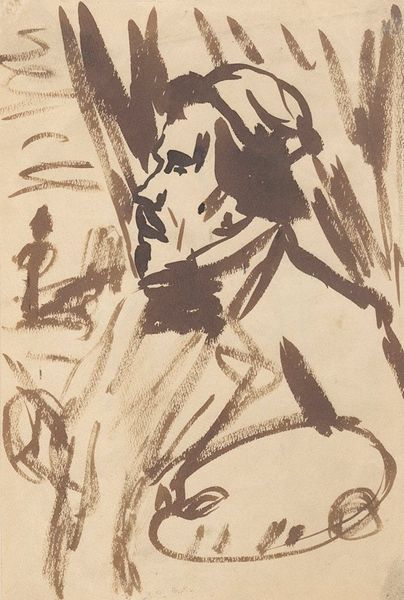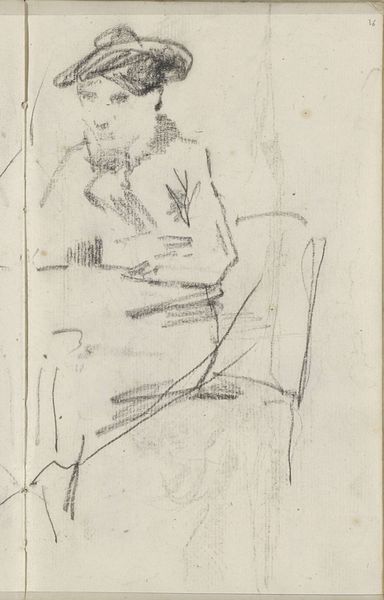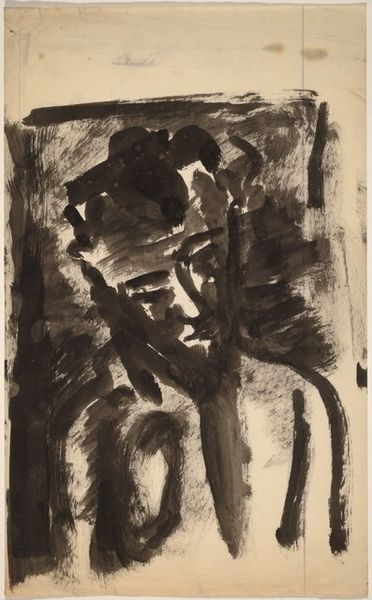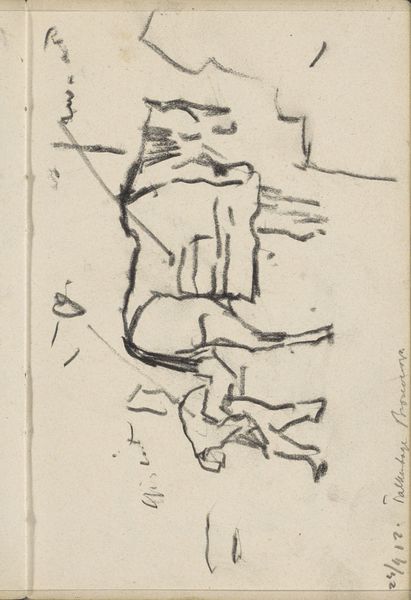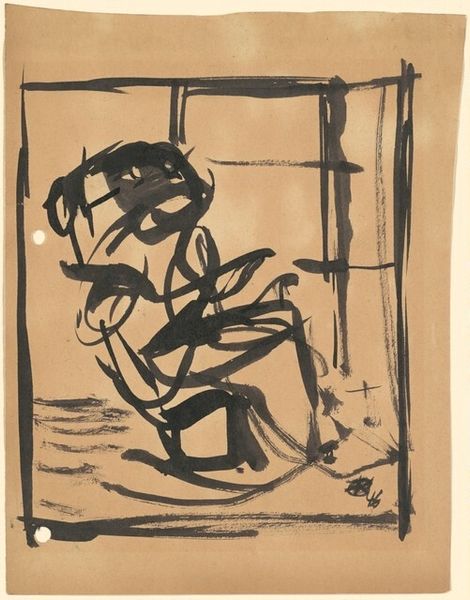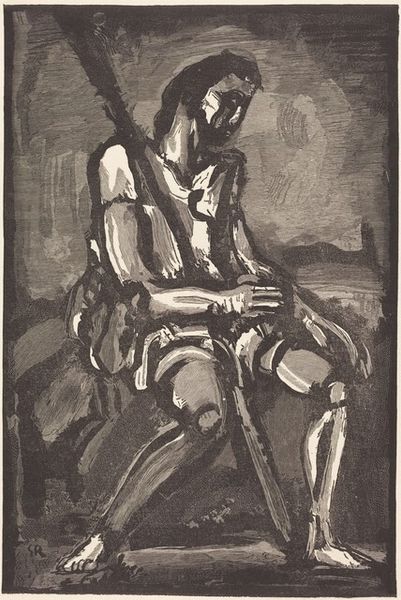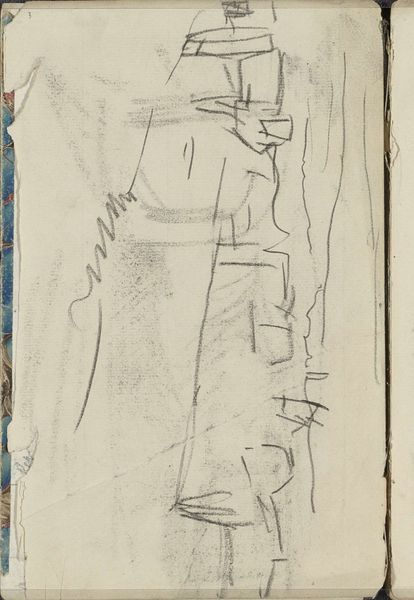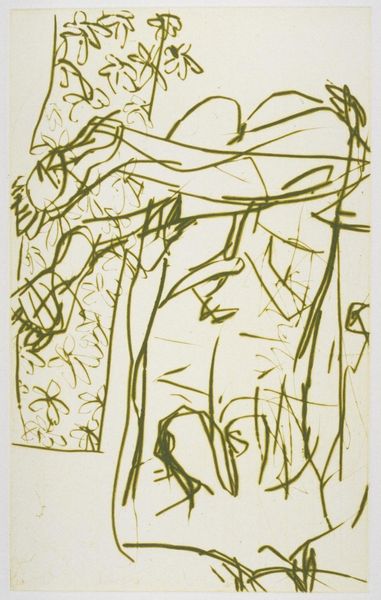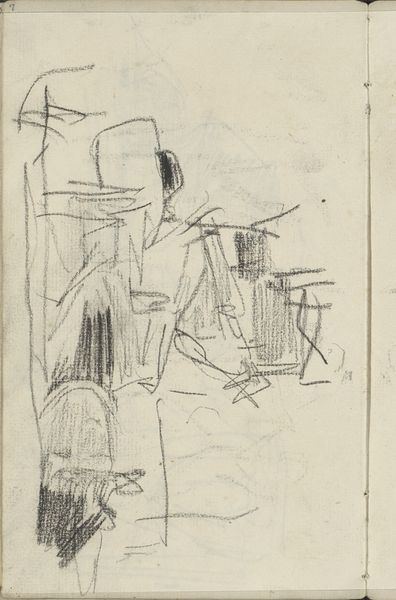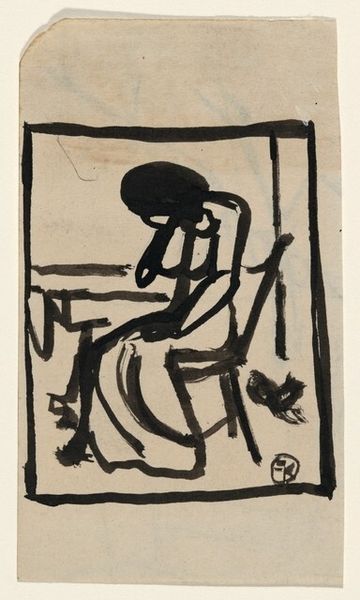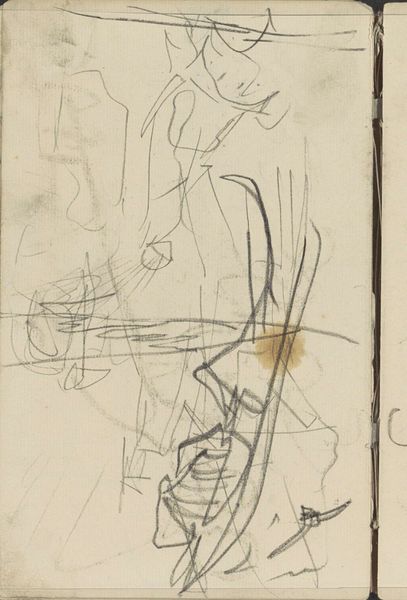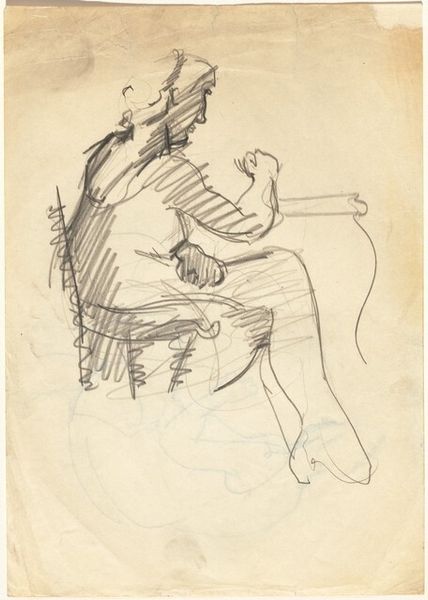
drawing, ink
#
abstract-expressionism
#
drawing
#
ink drawing
#
self-portrait
#
figuration
#
ink
#
abstraction
Dimensions: sheet: 25.08 × 20.32 cm (9 7/8 × 8 in.)
Copyright: National Gallery of Art: CC0 1.0
Editor: Here we have Franz Kline's "Self-Portrait" from around 1947, rendered in ink. There's a stark, almost brutal quality to the lines. What sort of imagery strikes you when you view this work? Curator: The symbols are raw, aren't they? That brute force in the ink mimics the fractured self he’s presenting. Consider the mask-like face—mere suggestions of features. What emotional truth do you think is being conveyed, beyond a simple likeness? Editor: Perhaps a vulnerability? The fragmented composition makes it seem as if he’s laid bare. Curator: Precisely. The linear construction is important here. See how the cage-like lines trap the figure? He uses that containment, those crude gestural marks, as stand-ins for the internal conflicts that he's facing. Is he revealing something about artistic identity, would you say, or human identity more broadly? Editor: I'd say human identity, definitely. The barest visual cues conjure so much emotional recognition. It makes you wonder what parts of ourselves we choose to obscure. Curator: It is an act of obscuration, and self-excavation! He's digging at the visual shorthand to find something deeper and truer. The power lies in that tension. That is what stays with us over time. What did this perspective uncover for you, ultimately? Editor: It shows the expressive potential in simplicity and the evocative quality of suggestive abstraction. Thank you for these insights! Curator: And thank you! Visual artifacts like these really enrich our understanding of the human experience.
Comments
No comments
Be the first to comment and join the conversation on the ultimate creative platform.
